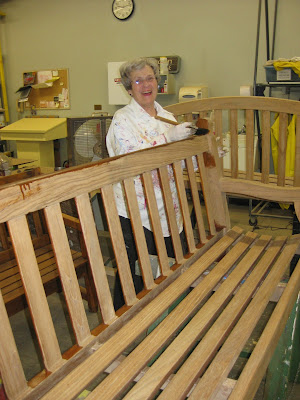It's nice to see the temperatures warm up and the snow continue to melt. In order to get my "color fix" today, I've located and included many of my photographs of the annual million bells (Calibrachoa) that are heavily promoted and are becoming more common in our garden centers and summer gardens. Above is the variety 'Lemon Slice' which will be extremely popular this year. Sometimes called "trailing petunia", these natives of South America are related to petunias but have some genetic differences. There is significant breeding and development with this genus and seemingly dozens of new varieties available each year. Compared to the standard petunia, the flowers are smaller on million bells (1" - 1.5" diameter) and there are both single and double forms (see some double varieties at the bottom of this blog). Plant heights are dependent on variety but most are between 6" and 10". However, some varieties have mounded forms while other are more trailing and appropriate for low walls, hanging baskets or other container edges. When I visited many plant trials last summer, I couldn't believe the number of selections for this increasingly popular annual that does equally well in the container, hanging basket and bedding scheme. Most of the photos here were taken over the heat of the past two summers. We've grown many varieties over the years with most being in containers and baskets. We do find that supplemental fertilization and a bit of extra iron (Fe) for green foliage keeps these performing well throughout the entire summer. Pampering of Million Bells is vital for their best performance and "color longevity." All too often, I see failing specimens by mid-summer with yellowing foliage and reduced blooms. Keep them happy with the additional fertilization, well-drained soils, adequate watering and as much sun as possible. We'll be using many of the orange varieties (like the one below) in our big orange theme this year.
'MiniFamous iGen Orange'
It was relatively quiet today at the Horticulture Center. My early excitement involved our aggressive coffee machine that didn't stop providing water flow and created quite a mess. It was repaired quickly but the mess was challenging to tackle. Regardless, I spent the rest of the day getting ready for the start of the grounds staff next week as we'll have our little "Orientation Monday" next week which will include our two "newbies". Cindy B. and Larry G. should be nice additions to the team and neither is a stranger to gardening/landscaping or hard work. I hope Mother Nature cooperates more this summer with an occasional soaking rain but we're prepared for anything including the sprinkler and hose routine that has become all too common.
Volunteers today included Pat M. who is converting our Spring Tree Sale signs which we'll get up very soon. This is our third annual tree sale that we do in partnership with the Blackhawk Golden "K" Kiwanis Club here in town. Originally scheduled to be held on April 19th, 20th and 21st, the sale is located at the Horticulture Center from 8 am - 3 pm daily. UPDATE! - The sale may be rescheduled because of a delay with digging the trees up north in the frozen tundra. More info soon!!! We'll have seven selections of 2-3 year old, bare-root "transplants" for $1.85 each plus tax. Orders of 50 or more total trees get 10% off. See our website for more details. Rose and Urban worked on staining benches and Dr. Gredler finished one of his painting projects. We also saw Dick H., Maury, Glenn D. and some others today. The identification for each variety seen below is underneath the image.
'Million Bells Cosmos Pink'
'Superbells Apricot Punch'
'Superbells Scarlet'
'Superbells Dreamsicle'
'Superbells Saffron'
'Miss Lilac'
'Cherry Star'
'Superbells Apricot Punch' (at my house)
'Callie Dark Blue'
'Noa Banana'
'Noa Peach'
'Noa Black Purple Improved'
'Celebration Peach Cobbler'
'Kimono Blue Dragon'
'Kimono Tokyo Sunset'
'Lindura Yellow'
'MiniFamous Double Amethyst'
'MiniFamous Rose Chai'






































.jpg)



+2012.jpg)








.JPG)




